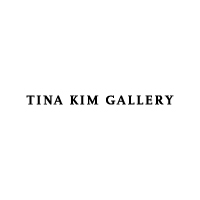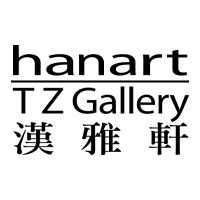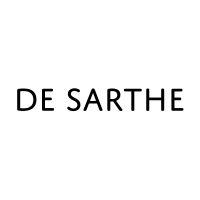Su Yu-Xin’s “Searching the Sky for Gold”
By JENNIFER S. LI
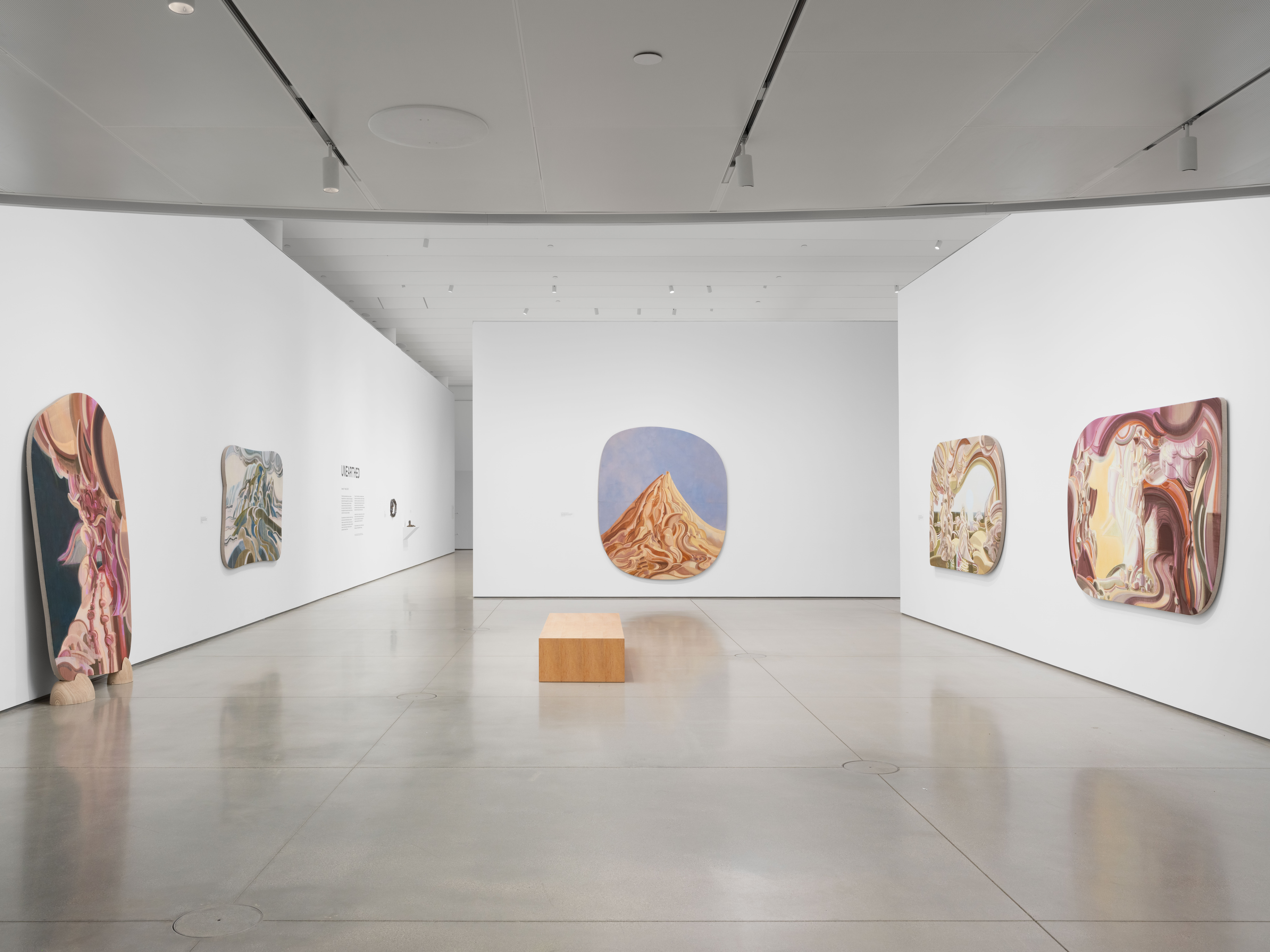
Installation view of SU YU-XIN’s "Searching the Sky for Gold" at the Orange County Museum of Art (OCMA) in Costa Mesa, California, 2025. Photo by Yubo Dong, ofstudio. Courtesy OCMA.
Su Yu-Xin
Searching the Sky for Gold
Orange County Museum of Art
Costa Mesa, California
Jan 31–May 25, 2025
For her first institutional solo show in the US, titled “Searching the Sky for Gold,” Los Angeles-based Taiwanese artist Su Yu-Xin unified landscape painting with its physical referent, in concert with the spiritual, philosophical, and historical elements of Chinese shanshui, Japanese nihonga, and Western oil painting. The exhibition title references both the mythology and reality of the mid-19th-century California Gold Rush, where prospectors (one-fifth of whom were from China) mined the land for the precious metal. Echoing this foraging sentiment, Su conducts experiments and research in the areas that she visits, gathering shells, rocks, and other materials from each location, which she then uses to picture their respective sites.
A dozen large, atmospheric paintings of landscapes from across the US, Taiwan, Japan, and Indonesia filled two galleries at the Orange County Museum of Art (OCMA) in Costa Mesa, California. Su eschews the typical rectilinear form of a painting, stretching her canvases over oblong frames that evoke the roughly elliptical shape of the human field of vision. About half of the larger paintings hung on the wall, while the rest were propped up on the floor, with their lower portions slotted into pairs of rounded wooden bases, not unlike steles or scholars’ rocks.
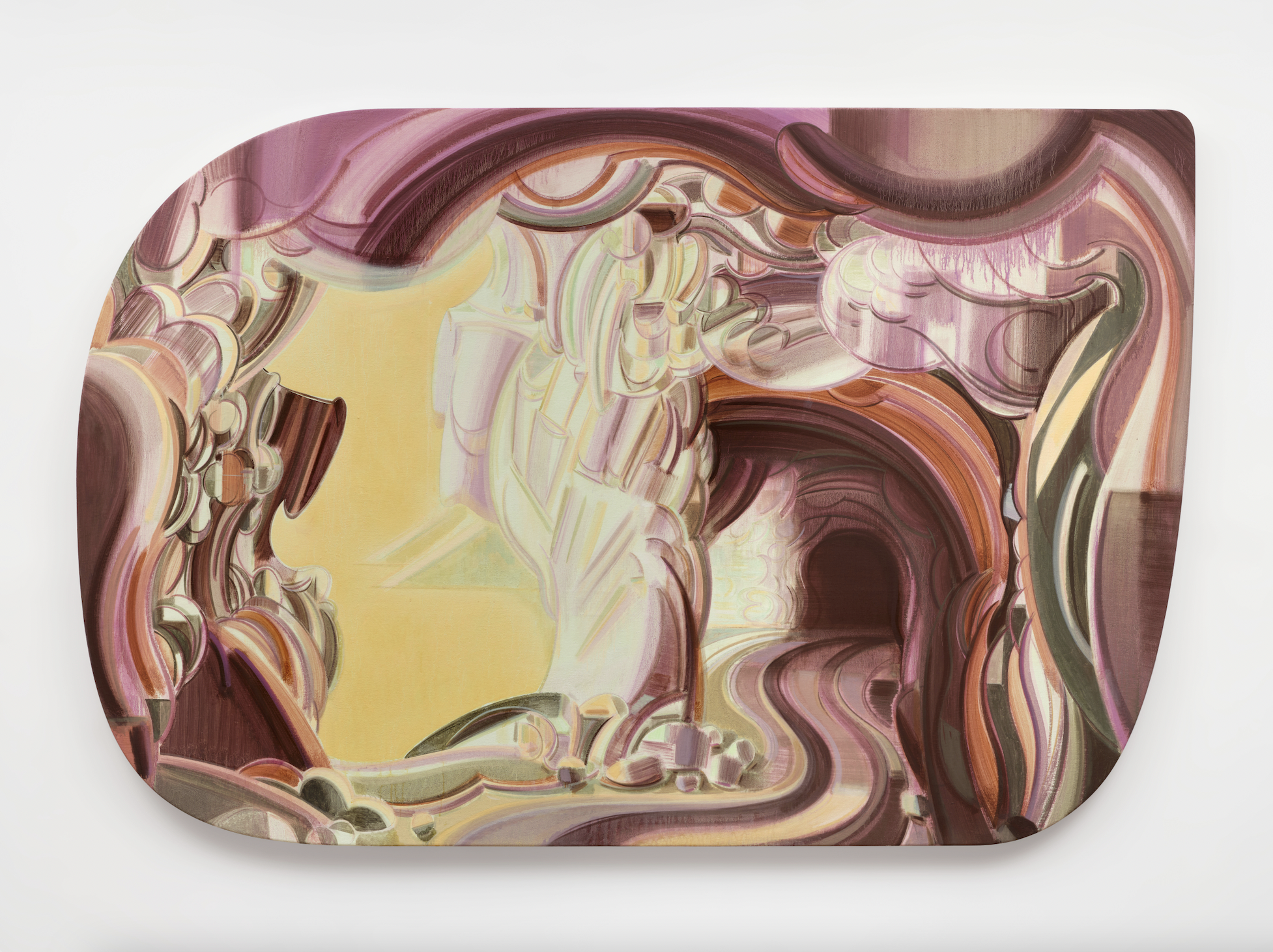
SU YU-XIN, With or Without the Sun #3 (Coastal Road on the East side of Taiwan), 2024, hematite, purple shale, halloysitum rubrum, iwa-enogu, snail shells, green soil, orpiment, soil, red agate, malachite, and other handmade pigments on flax stretched over wooden frame, 155 × 235 × 5.6 cm. Courtesy Madein Gallery, Shanghai.
Su’s stylized and abstract pictorial language employs a dynamism reminiscent of Italian Futurism. A winding road in With or Without the Sun #3 (Coastal Road on the East side of Taiwan) (2024) pulled viewers into the dark recess of a tunnel within a mountain of the Hualien region, where Su was born. All around are swooping and curved brushstrokes—resembling plumes of fog or wild mountainous terrain—that continually shifted one’s eyes across the picture plane.
In some instances, Su’s approach was a cross between Japanese anime and nihonga, as exemplified by the cartoon-like lava spouting from Dust Crown (Mount St. Helens) and Dust Crown (Mount St. Helens) #2 (both 2024), which depict the eponymous active volcano in Washington State. For both paintings, Su utilized ground helenite—a synthetic stone that was accidentally discovered after the 1980 eruption of Mount St. Helens, when timber workers found that the ash transformed into a vibrant, hard green glass under the heat of their welding torches. The former work is deeply hued with various shades of blue and green, and features intense, gestural scrawls made with a pastel that Su created from the volcanic rock dust she harvested on site.

SU YU-XIN, Dust Crown (Mount St. Helens) #2, 2024, helenite, orpiment, titanium dioxide, halloysitum rubrum, woad lake pigment, seaglass, black volcano rocks, ceramic glaze, and other handmade pigments on flax stretched over wooden frames and wooden stands, 245 × 155 × 5.6cm. Courtesy the artist.
Other paintings appeared almost Romantic or Impressionistic. A Blue-and-Green Landscape in Rain (2024) called to mind JMW Turner’s dramatic paintings with their dripping, slanting, frenetic brushstrokes. Yet Su’s drips and alchemical use of color also conjured Tang dynasty porcelain figures with their streaked, polychrome sancai glazing, in which 7th-century artisans added iron and copper to manipulate shades of light and dark brown, amber, and rich olive-green. Just as the Tang dynasty flourished with the Silk Road in terms of international trade and cross-pollination in the arts, perhaps Su’s practice has benefited from her around-the-world move from Los Angeles—by way of Hualien, London, and Shanghai—in 2022. Her vibrant canvases reflect this hybridization, with pigments derived from California being used to paint the landscapes of Indonesia or Japan, among other places.

Installation view of SU YU-XIN’s "Searching the Sky for Gold" at the Orange County Museum of Art (OCMA) in Costa Mesa, California, 2025. Photo by Yubo Dong, ofstudio. Courtesy OCMA.
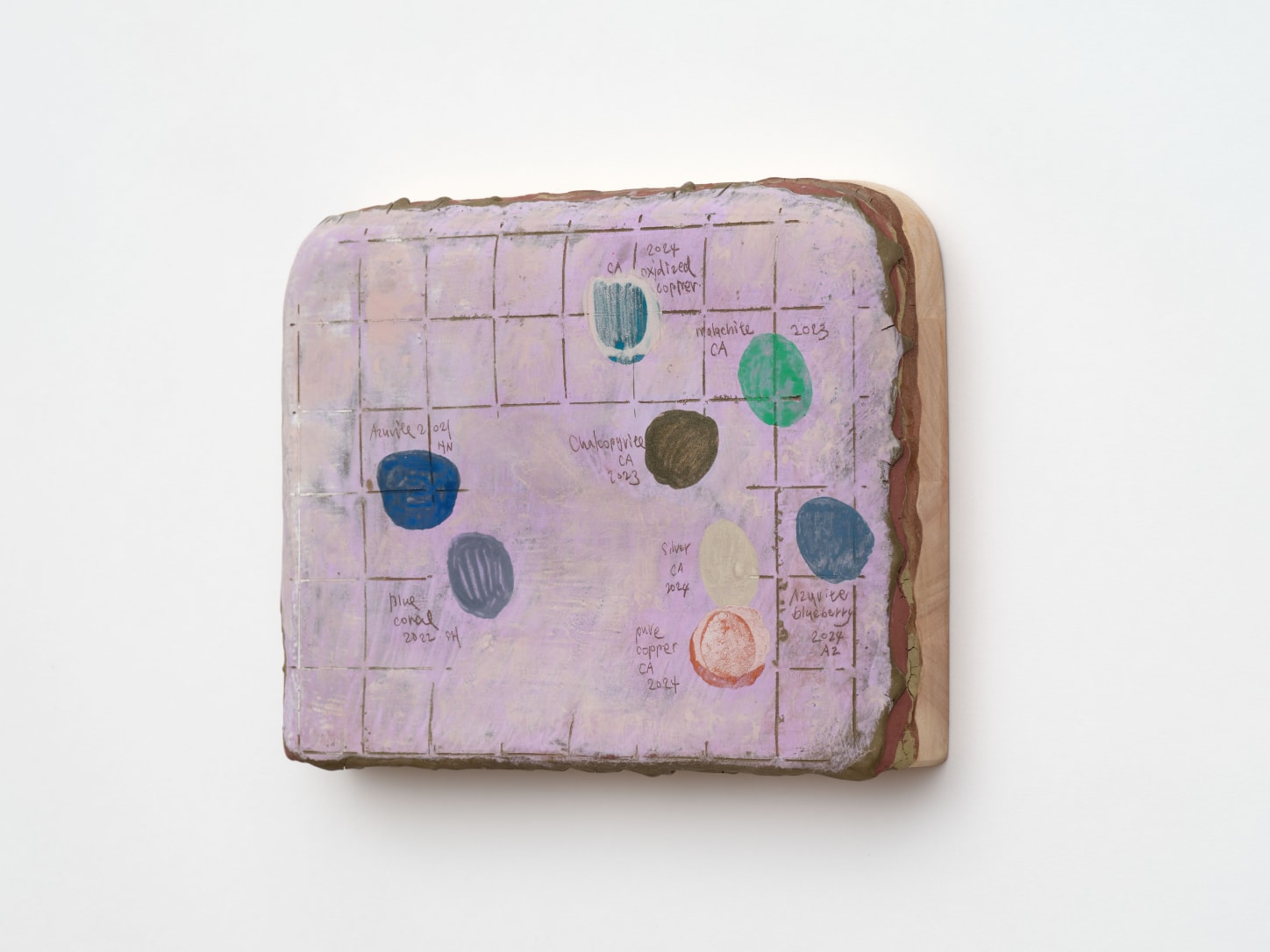
SU YU-XIN, The Map of Mine and Other Things, 2024, pure copper, chalcopyrite, azurite, pure silver, blue coral (Heliopora coerulea), malachite, gofun, copper oxide, soil, acrylic paint, and other handmade pigments on hand-shaped wood, 26.6 × 19.5 × 4.25 cm. Courtesy the artist.
One wall hosted ten small, meticulous material studies—layered and belabored enough to constitute artworks or perhaps artifacts in their own right. Beginning with patched-together, often salvaged remnants of plywood, Su added layers of clay, as if building a miniature topography for the larger canvases she would then produce. For example, The Map of Mine and Other Things and A Chase for Treasure (both 2024) have cartographic gridlines and noticeable depressions and valleys.
Su’s paintings at “Searching the Sky for Gold” were deeply evocative, embodying both an otherworldly and terrestrial quality. As earth, fire, water, and air were limned in each canvas, the visual and material renderings complemented and completed Su’s own process of excavating earthbound matter to depict our home planet and its natural elements.
Jennifer S. Li is a writer, art advisor, and educator based in Los Angeles. She is also ArtAsiaPacific’s Los Angeles desk editor.



